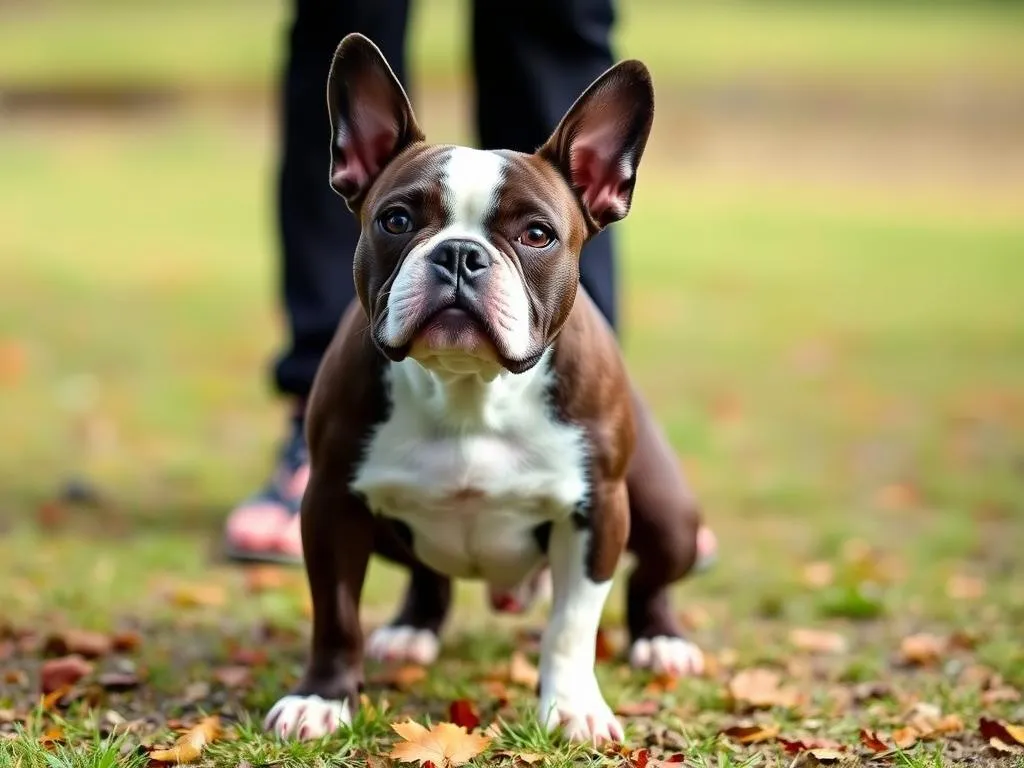
Boston Terriers are known for their charming personalities and playful demeanor. This breed is small yet robust, typically weighing between 10 to 25 pounds, with a characteristic tuxedo-like coat that makes them stand out. Boston Terriers are intelligent, energetic, and adaptable, which makes them excellent companions. However, their stubborn streak can pose challenges during training. Understanding how to train a Boston Terrier effectively is crucial not just for managing their behavior but also for strengthening the bond between you and your furry friend.
Understanding Your Boston Terrier
Breed Characteristics
Boston Terriers are a unique breed with distinct characteristics. They are compact and muscular, with a square build, short snouts, and large, expressive eyes. Generally, these dogs are friendly, playful, and eager to please, making them a joy to have around. However, their stubbornness can sometimes lead to frustration during training sessions. It’s important to remember that, despite their small size, they possess a lot of energy and require regular physical and mental stimulation.
Learning Style
When it comes to learning, Boston Terriers respond best to positive reinforcement. This means rewards should be given for good behavior, such as praise, treats, or playtime. Negative reinforcement can lead to fear and anxiety, making training more difficult. Consistency and patience are paramount; these dogs thrive on routine and positive interactions. Establishing a clear training method from the beginning will help your Boston Terrier understand expectations and learn new commands more effectively.
Preparing for Training
Essential Training Equipment
To train your Boston Terrier successfully, you’ll need some essential equipment:
- Collars and Leashes: A comfortable collar and a sturdy leash are vital. Consider using a harness that discourages pulling, as Boston Terriers have a tendency to do so.
- Treats: High-quality treats are crucial for positive reinforcement. Choose small, soft treats that your dog loves to keep their interest during training.
- Training Aids: Clickers can be helpful for marking desired behaviors. Additionally, agility equipment can be used later on to keep training fun and engaging.
Setting Up the Training Environment
Creating the right environment is key for effective training. Choose a quiet indoor space for initial training sessions, free from distractions. Once your Boston Terrier masters basic commands, you can gradually introduce outdoor settings where there might be more distractions. Always ensure that your dog is comfortable and focused during training.
Establishing a Training Schedule
Routine is essential when training a Boston Terrier. Establish a schedule that includes short, focused training sessions throughout the day. Aim for 5 to 10 minutes of training multiple times a day, as Boston Terriers have shorter attention spans. Consistency in timing helps your dog understand when to expect training, reinforcing the routine.
Basic Commands and Techniques
Teaching Basic Obedience Commands
Teaching basic commands is the foundation of training. Here are some essential commands to start with:
-
Sit: Hold a treat close to your dog’s nose, then slowly move it upward. As their head follows the treat, their bottom will lower. Once they are in the sitting position, say “sit” and give the treat.
-
Stay: Have your dog sit, then open your palm in front of you and say “stay.” Take a few steps back. If they remain in place, reward them. Gradually increase the distance and duration before rewarding.
-
Come: Use a long leash in a safe, enclosed area. Call your dog’s name followed by “come,” gently pulling the leash if needed. When they reach you, reward them with praise and treats.
-
Leave It: Place a treat in your hand and close your fist. When your dog tries to get it, say “leave it.” Once they stop trying, reward them with a different treat.
Leash Training
Leash training is essential for Boston Terriers, who can be prone to pulling. Start by having your dog wear the leash indoors. Reward them for walking beside you without pulling. If they start to pull, stop walking. Wait until they return to your side before continuing. Patience is key; gradually increase the distance you walk together as they learn to stay by your side.
House Training
Potty training can be a challenge, but consistency is vital. Take your Boston Terrier outside frequently, especially after meals or naps. When they go potty outside, reward them immediately. Recognize signs that your dog needs to go out, such as sniffing, circling, or whining. Accidents will happen, so avoid punishment; instead, focus on reinforcing good behavior.
Advanced Training Techniques
Socialization Skills
Socializing your Boston Terrier with other dogs and people is crucial for their development. Early socialization can prevent behavioral issues in adulthood. Introduce them to various environments, sounds, and experiences gradually. Ensure these interactions are positive; reward your dog with treats and praise when they behave calmly around new experiences.
Trick Training
Boston Terriers love to learn tricks, which can be an enjoyable bonding experience. Start with simple tricks like “roll over” or “shake.” Use positive reinforcement to encourage them, and incorporate playtime as a reward. Making training sessions fun will keep your Boston Terrier engaged and eager to learn more.
Addressing Behavioral Issues
Common behavioral problems in Boston Terriers include barking, chewing, and aggression. To address barking, identify the triggers and work on desensitization. For chewing, provide appropriate chew toys and redirect their attention. Aggression may require more specialized training techniques, so consulting a professional trainer could be beneficial.
Health and Well-being During Training
Physical Exercise Needs
Boston Terriers require regular physical activity to stay healthy and happy. Daily walks, playtime, and engaging games like fetch are excellent ways to provide exercise. Aim for at least 30 minutes of activity each day, adjusting based on your dog’s energy level.
Mental Stimulation
Mental stimulation is as important as physical exercise. Engage your Boston Terrier with puzzle toys, interactive games, and training exercises that challenge their intellect. Activities like hide-and-seek can also provide mental engagement while strengthening your bond.
Recognizing Stress and Overtraining
Watch for signs of stress in your Boston Terrier, such as excessive panting, drooling, or refusal to participate in training. If you notice these signs, give your dog a break and adjust your training routine to prevent burnout. Training should be a positive experience for both you and your dog.
Building a Strong Bond with Your Boston Terrier
Positive Reinforcement Techniques
Positive reinforcement is essential for building trust and a strong relationship with your Boston Terrier. Always praise and reward your dog for good behavior, creating a positive association with training. This approach not only encourages good behavior but also strengthens your emotional bond.
Fun Activities Beyond Training
Engage in fun activities that foster your bond outside of training. Consider agility courses, fetch, or playdates with other dogs. These activities allow your Boston Terrier to socialize and expend energy while still enjoying time with you.
Conclusion
Training your Boston Terrier is a rewarding journey that enhances their behavior and strengthens your bond. With patience and consistency, you can instill good habits and commands in your dog. Remember that every dog is unique, so adapt your training methods to suit your Boston Terrier’s personality. Embrace the experience, and you’ll find that training can be one of the most enjoyable aspects of dog ownership.
By understanding how to train a Boston Terrier effectively, you create a harmonious and fulfilling relationship with your furry friend. Enjoy every moment, and cherish the bond that grows through training.









